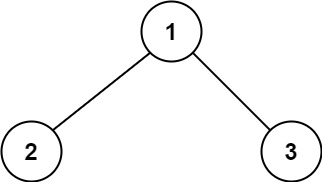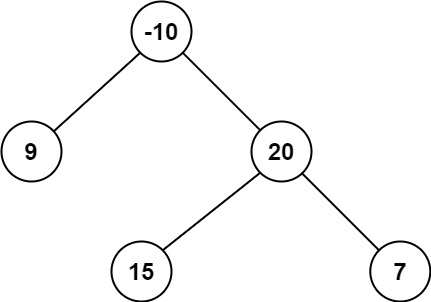Description
A path in a binary tree is a sequence of nodes where each pair of adjacent nodes in the sequence has an edge connecting them. A node can only appear in the sequence at most once. Note that the path does not need to pass through the root.
The path sum of a path is the sum of the node’s values in the path.
Given the root of a binary tree, return the maximum path sum of any non-empty path.
Example 1:

Input: root = [1,2,3] Output: 6 Explanation: The optimal path is 2 → 1 → 3 with a path sum of 2 + 1 + 3 = 6.
Example 2:

Input: root = [-10,9,20,null,null,15,7] Output: 42 Explanation: The optimal path is 15 → 20 → 7 with a path sum of 15 + 20 + 7 = 42.
Constraints:
- The number of nodes in the tree is in the range
[1, 3 * 104]. -1000 <= Node.val <= 1000
Code
Time Complexity: , Space Complexity:
/**
* Definition for a binary tree node.
* struct TreeNode {
* int val;
* TreeNode *left;
* TreeNode *right;
* TreeNode() : val(0), left(nullptr), right(nullptr) {}
* TreeNode(int x) : val(x), left(nullptr), right(nullptr) {}
* TreeNode(int x, TreeNode *left, TreeNode *right) : val(x), left(left), right(right) {}
* };
*/
class Solution {
int maxSum = INT_MIN;
public:
int maxPathSum(TreeNode* root) {
maxPath(root);
return maxSum;
}
int maxPath(TreeNode* node) {
if(!node) return 0;
int leftBranchMax = max(maxPath(node->left), 0);
int rightBranchMax = max(maxPath(node->right), 0);
maxSum = max(maxSum, node->val + leftBranchMax + rightBranchMax);
return node->val + max(leftBranchMax,rightBranchMax);
}
};